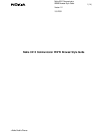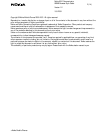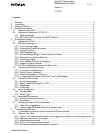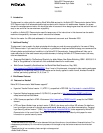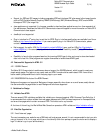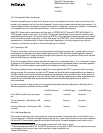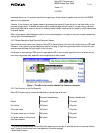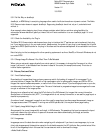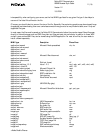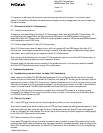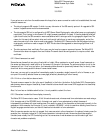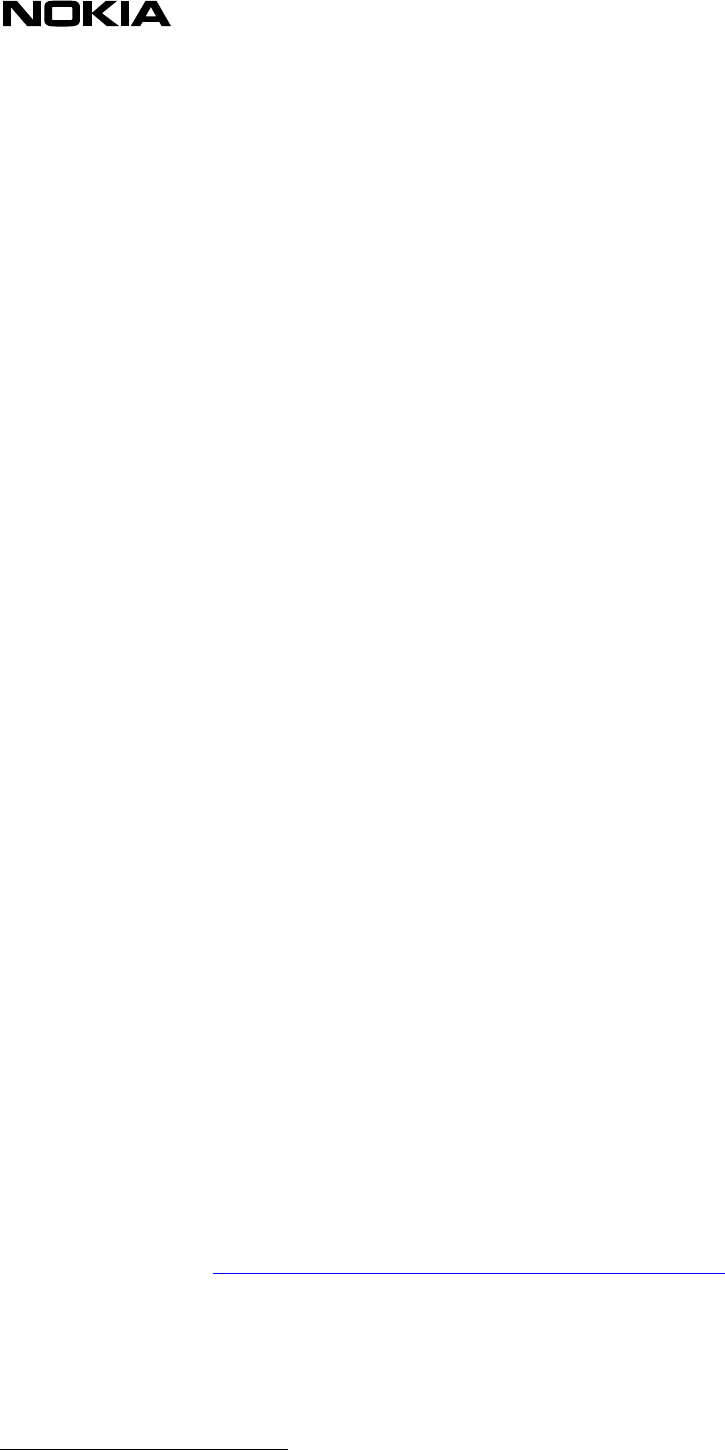
Nokia 9210 Communicator
WWW Browser Style Guide
10 (14)
Version 1.2
18/1/2001
ãNokia Mobile Phones
5.4.4 Colourmap
The Nokia 9210 Communicator supports 4096 colours. The full “true colour” is specified by 24 bits, 8 bits for each
colour component (red, green and blue). The Nokia 9210 Communicator is using the most significant 4 bits of each of
the colour component, resulting in a colour depth of 12 bits. All other colours will either be dithered or mapped to the
closest colour available, depending on the application. In other words, this means that the Nokia 9210 Communicator
supports every 16
th
colour of the 24-bit colourmap; for example, in HTML-like notation, #100000, #200000, and
#300000 are the three darkest shades of red.
When creating graphics with uniform fills, use only the colours which will not be dithered. Some image processing
tools may be able to reduce the size of images if you restrict the number of colours to the exact 4096 colours
supported by the Nokia 9210 Communicator.
Do not use colours which are too close to each other (differ only in the least significant four bits of each colour
component). This may result in the colours being mapped to the exact same colour. For example, again in HTML-like
notation, #110000 and #1F0000 map to #100000 (unless the application chooses to dither the colour).
If you are using transparent images, be sure to set the background colour in the HTML document accordingly. If the
transparency relies upon a dark background image, a dark background colour should also be specified.
For added accessability, you may wish to review the images in grayscale (if compatibility with the Nokia 9110
Communicator and other grayscale PDAs is important) and take the requirements of colour-blind users into account.
5.5 Server Configuration
5.5.1 Character Sets
The web server should always supply the correct character set information in the HTTP response headers.
The Nokia 9210 Communicator encodes all form submissions as per the HTML 4.01 specification, using a language-
specific character set. For Western European and Nordic language versions, the ISO 8859-1 (ISO Latin 1) character set
is used. Elsewhere, the character set may change according to the characters available in that specific language
version.
If the language version uses characters that are not available in the ISO 8859 standard series, the device may use
Unicode character set with UTF-8 encoding. The server should not just assume that all incoming forms are in ISO
8859-1. Supporting Unicode on server side has the additional benefit of adding another layer of international
compatibility to your web site.
5.5.2 MIME Types
Some web servers tend to use the generic MIME type ‘application/octet-stream’ for most downloaded files that are
not HTML or text. The Nokia 9210 Communicator, however, uses and stores the MIME type information, so the web
server should always be configured to return the correct MIME type for a given file. Please see IANA’s web site for a
listing of MIME types at http://www.isi.edu/in-notes/iana/assignments/media-types/. If, however, the generic MIME
type is used, the Nokia 9210 Communicator tries to guess the file format from the file suffix and its contents.
The Nokia 9210 Communicator supports a number of MIME types, either in its web browser, or through a separate
application. This table lists the file types that can be viewed
6
with the software that comes either factory installed or
on the companion CD-ROM. For some of the MIME types, there may be more than one application that can view the
file, and these applications may use different MIME types as some of the MIME types are not standard. To maximise
6
Note: a file might not be always viewed correctly. Some file types may use features and content that cannot be viewed.
Different viewers may have also differing capabilities.



